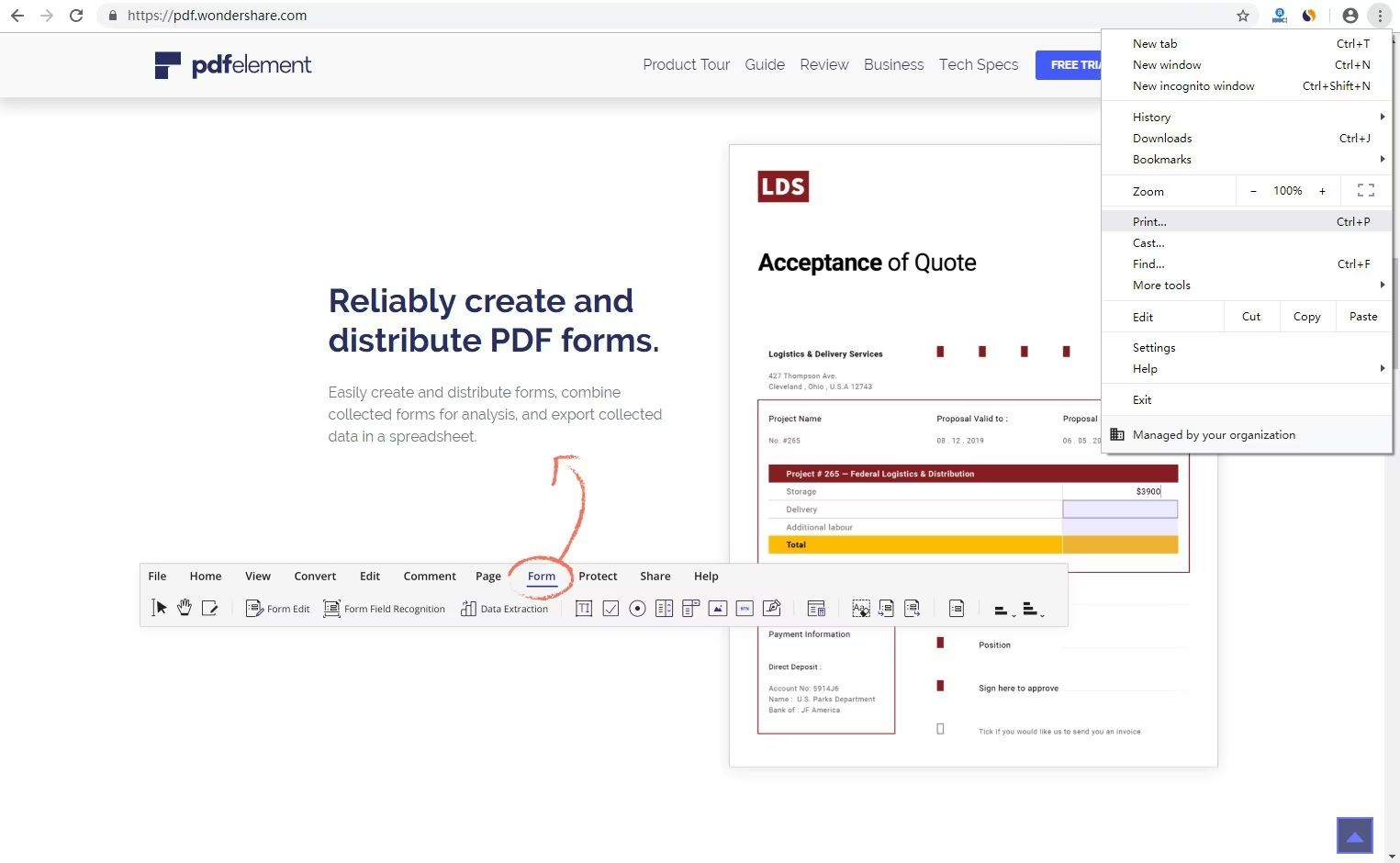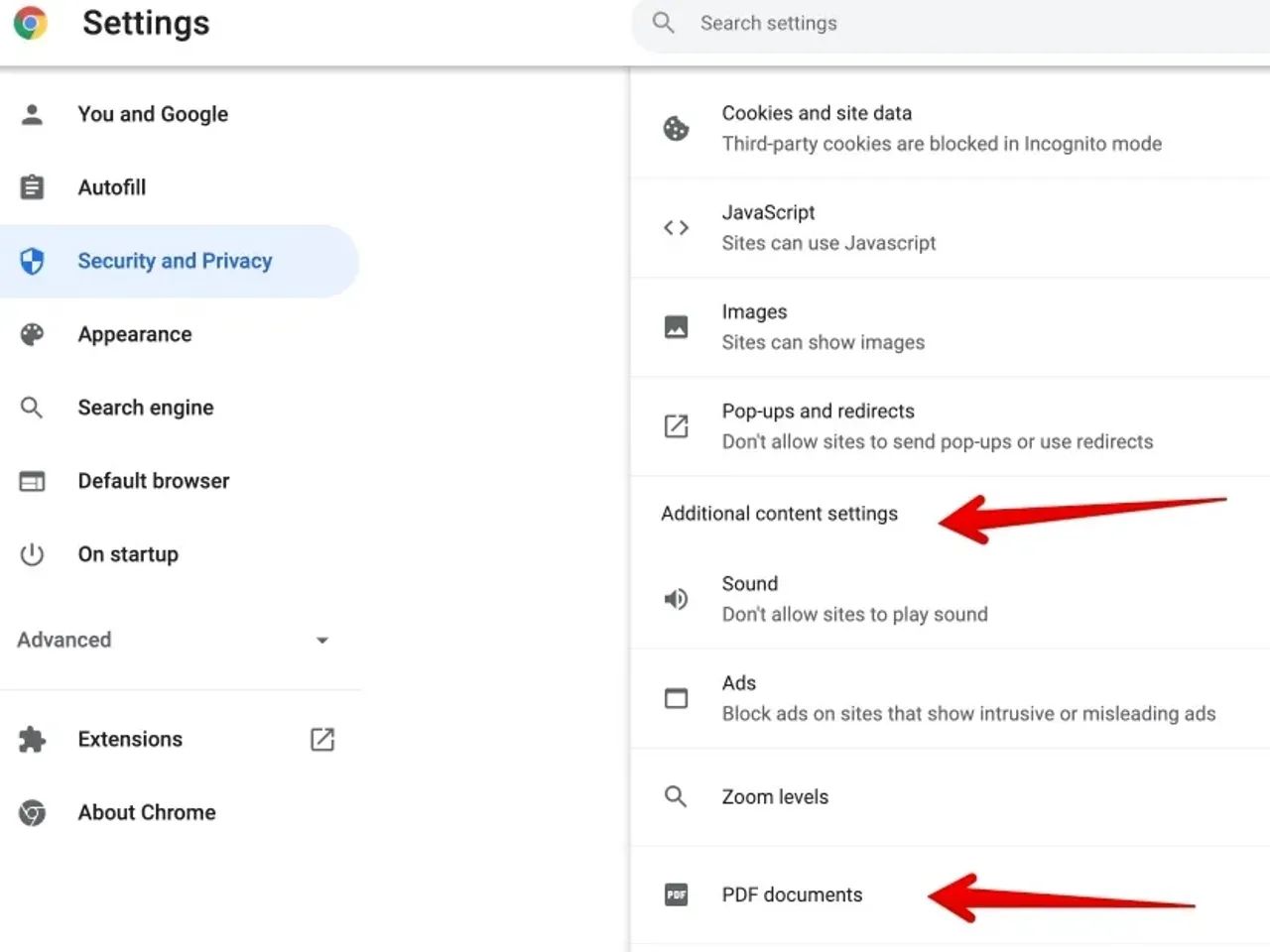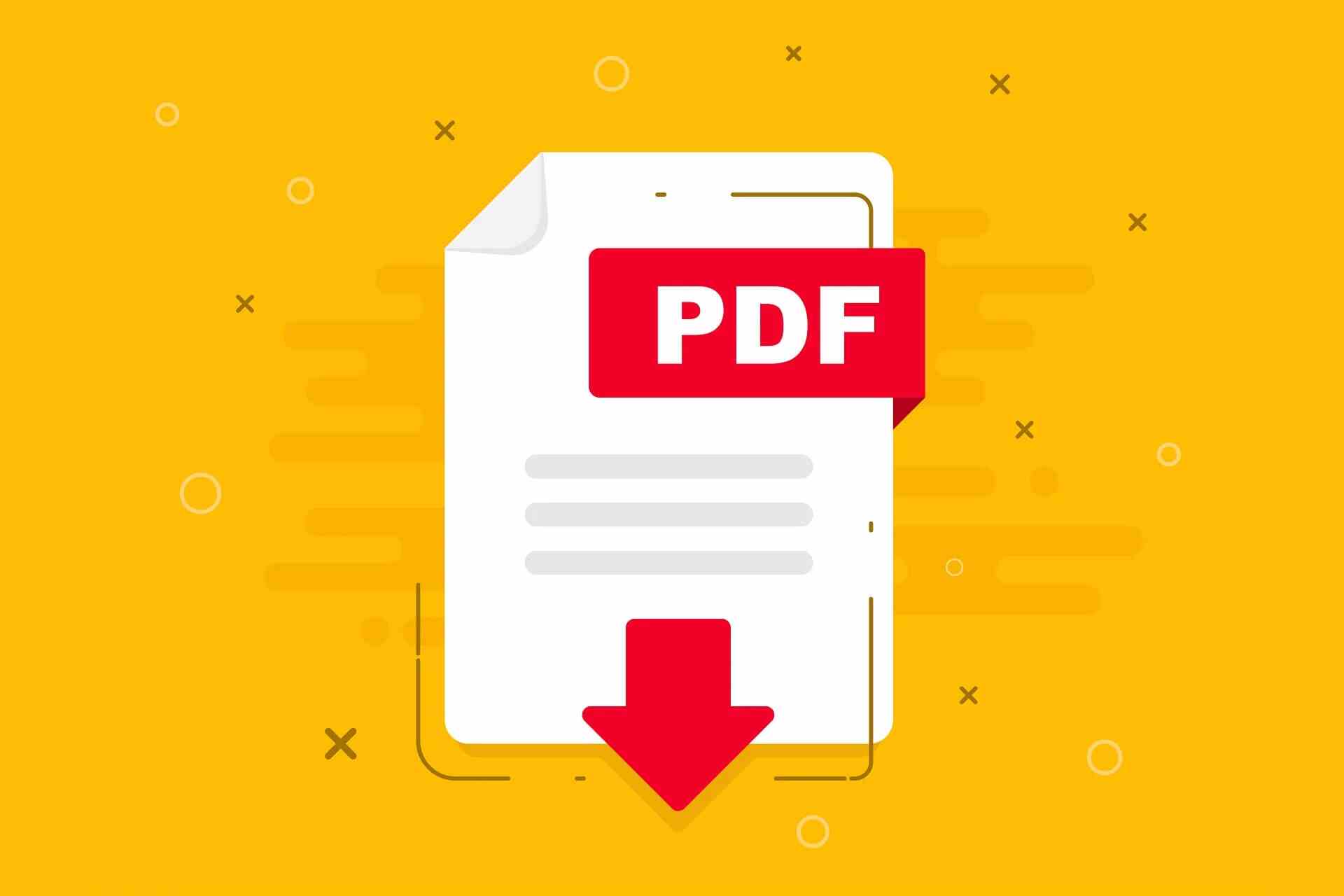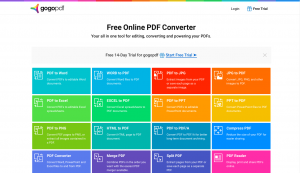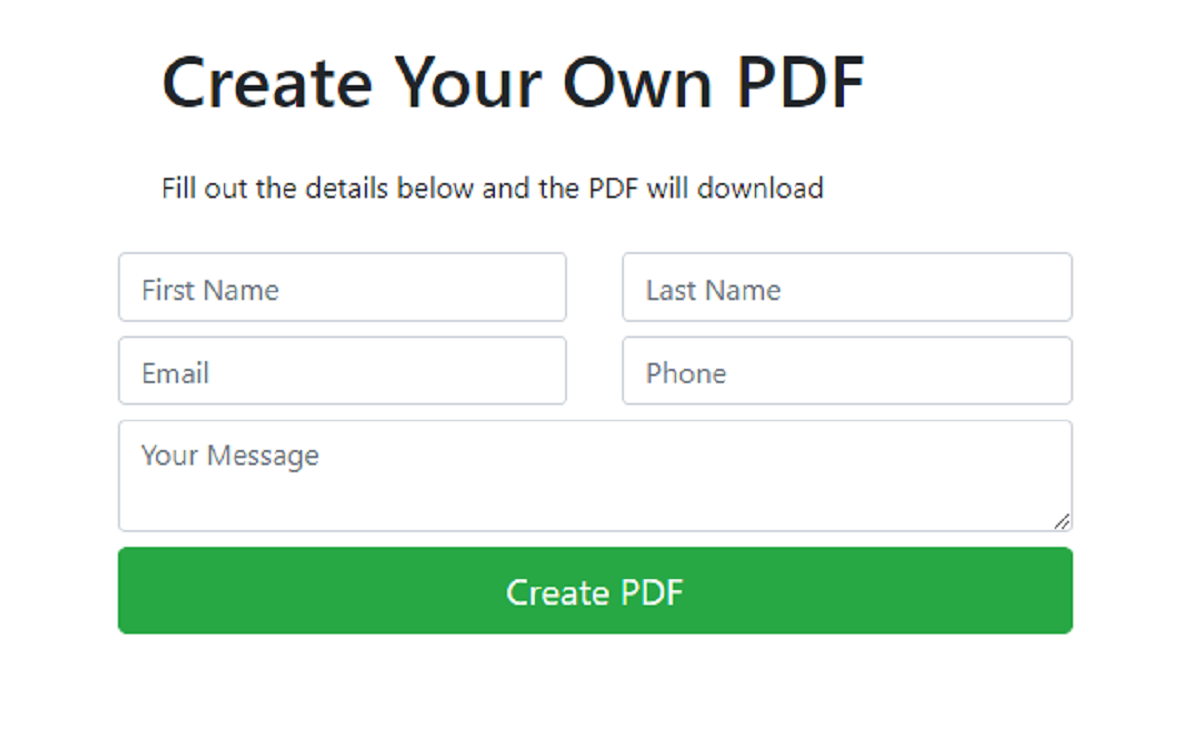Introduction
Saving a Chrome HTML document as a PDF is a convenient way to preserve the content of a webpage in a portable and easily shareable format. Whether you want to archive a webpage for future reference, share it with others, or simply enjoy the benefits of a PDF format, Chrome provides a simple and efficient method to accomplish this task.
In this article, we will explore the step-by-step process of converting an HTML document to a PDF using the Google Chrome browser. This method is particularly useful for capturing the content of a webpage in its entirety, including text, images, and formatting, and then converting it into a PDF file that can be accessed and viewed across various devices and platforms.
By following the instructions outlined in this guide, you will be able to seamlessly transform any HTML document into a PDF, ensuring that the original layout and content are preserved with precision. Whether you are a student, professional, or casual user, the ability to save Chrome HTML documents as PDFs can streamline your workflow and enhance the accessibility of web content.
Now, let's delve into the specific steps required to achieve this conversion, empowering you to harness the full potential of Chrome's functionality and effortlessly create PDF versions of your favorite webpages.
Step 1: Open the HTML document in Chrome
To begin the process of saving a Chrome HTML document as a PDF, the first step is to open the HTML document in the Google Chrome browser. This can be achieved by navigating to the webpage or file that you wish to convert to a PDF and accessing it through the Chrome browser. Whether the HTML document is stored locally on your device or is a live webpage on the internet, Chrome provides a seamless platform for accessing and manipulating the content.
If the HTML document is located on your local device, simply open the Chrome browser and click on the address bar at the top of the window. Then, type "file://" followed by the path to the HTML document on your computer. Press "Enter" to load the local HTML file in the Chrome browser window. This action will display the content of the HTML document within the Chrome interface, allowing you to proceed with the PDF conversion process.
Alternatively, if the HTML document is a live webpage on the internet, open the Chrome browser and enter the URL of the webpage in the address bar. Press "Enter" to load the webpage, and the content will be displayed within the Chrome browser window. Ensure that the webpage is fully loaded and that all elements, including text, images, and formatting, are visible on the screen before proceeding to the next step.
By opening the HTML document in Chrome, you are setting the stage for the subsequent steps in the PDF conversion process. This initial action establishes the foundation for capturing the content of the HTML document and preparing it for transformation into a PDF format. With the HTML document now accessible within the Chrome browser, you are ready to progress to the next step and initiate the printing process, which will ultimately lead to the creation of a PDF version of the content.
By following these straightforward instructions, you can effortlessly open the HTML document in Chrome, setting the stage for a smooth and efficient transition to the subsequent steps in the PDF conversion process. This foundational step lays the groundwork for seamlessly transforming the HTML document into a PDF, ensuring that the content is accurately captured and preserved in a portable and accessible format.
Step 2: Print the document
Once the HTML document is open in the Chrome browser, the next step in the process of saving it as a PDF involves initiating the printing function. This step is crucial as it allows you to access the print settings and configure the parameters that will influence the appearance and layout of the PDF document.
To begin, navigate to the top-right corner of the Chrome browser window and locate the three vertical dots, which represent the "More" option. Click on these dots to reveal a dropdown menu, and then select the "Print" option. Alternatively, you can use the keyboard shortcut "Ctrl + P" on Windows or "Command + P" on Mac to directly access the print dialog.
Upon selecting the "Print" option, a new window will appear, displaying the print settings and preview of the HTML document. This interface provides a comprehensive set of options that enable you to customize the printing process according to your preferences.
Within the print settings window, you can specify the desired printer, choose the layout and orientation, adjust the paper size, and select the pages to be printed. Additionally, Chrome offers the flexibility to modify the margins, scale the content, and toggle the background graphics based on your specific requirements.
Furthermore, you have the option to preview the document before printing, allowing you to assess the appearance and formatting to ensure that it aligns with your expectations. This preview feature is particularly valuable as it enables you to verify the content and layout of the HTML document, thereby facilitating any necessary adjustments before proceeding to the PDF conversion stage.
By leveraging the extensive print settings provided by Chrome, you can tailor the printing process to suit the unique characteristics of the HTML document, ensuring that the resulting PDF accurately reflects the original content and visual presentation. This level of customization empowers you to maintain the integrity of the document while preparing it for conversion into a PDF format.
In summary, the "Print" function in Chrome serves as a pivotal intermediary step that enables you to access and modify the print settings, preview the document, and fine-tune the parameters before proceeding to the final stage of saving the HTML document as a PDF. This meticulous approach ensures that the resulting PDF faithfully captures the essence of the original content, thereby enhancing its usability and accessibility across diverse platforms and devices.
Step 3: Choose "Save as PDF" option
After customizing the print settings and previewing the HTML document, the next critical step in the process of saving it as a PDF involves selecting the "Save as PDF" option within the print dialog. This pivotal feature, integrated into the Chrome browser, facilitates the seamless conversion of the HTML document into a PDF format, ensuring that the content, layout, and visual elements are accurately preserved.
Upon accessing the print settings window, navigate to the section that allows you to choose the destination for the print output. Within this section, you will find a dropdown menu that presents various printing destinations, including physical printers and virtual PDF converters. To save the HTML document as a PDF, select the "Save as PDF" option from the list of available destinations.
By choosing the "Save as PDF" option, you are instructing Chrome to transform the content of the HTML document into a digital PDF file. This selection triggers the conversion process, wherein Chrome leverages its built-in capabilities to capture the entirety of the HTML document and encapsulate it within a PDF format. This seamless transition ensures that the resulting PDF faithfully mirrors the original content, encompassing text, images, formatting, and other visual elements with precision.
Furthermore, the "Save as PDF" option empowers you to define the file name, specify the storage location, and configure additional settings related to the PDF output. Chrome provides the flexibility to designate the file name according to your preferences, enabling you to succinctly describe the content or purpose of the PDF document. Additionally, you can choose the storage location where the PDF will be saved, ensuring convenient access and organization of the converted file.
Moreover, Chrome offers supplementary settings that allow you to adjust the page layout, scale the content, and modify other parameters to optimize the appearance of the PDF document. These customizable options enable you to tailor the PDF output to align with your specific requirements, thereby enhancing the overall usability and visual presentation of the converted document.
By choosing the "Save as PDF" option within the print dialog, you are initiating the final phase of the conversion process, culminating in the creation of a PDF version of the HTML document. This straightforward yet powerful feature encapsulates the essence of the HTML content within a portable and universally accessible format, thereby expanding the reach and utility of the original document.
In essence, the "Save as PDF" option in Chrome represents the gateway to transforming the HTML document into a PDF, offering a seamless and intuitive mechanism to capture, preserve, and share the content in a digital format. This pivotal step underscores the versatility and efficiency of Chrome as a platform for converting web content into portable and visually compelling PDF documents.
Step 4: Adjust settings if necessary
Upon selecting the "Save as PDF" option within the print dialog, Chrome presents a comprehensive array of settings that can be adjusted to fine-tune the appearance and layout of the PDF document. These settings offer a high degree of customization, allowing you to tailor the PDF output to meet specific requirements and preferences.
One of the key settings that can be adjusted is the page layout. Chrome provides the flexibility to choose between portrait and landscape orientations, enabling you to optimize the visual presentation of the PDF document based on the content of the HTML document. This feature is particularly valuable when dealing with diverse types of content, as it empowers you to align the orientation of the PDF with the inherent characteristics of the original content.
Additionally, Chrome allows you to modify the scale of the content, thereby influencing the size and proportion of the elements within the PDF document. This capability is instrumental in ensuring that the content is rendered with precision and clarity, especially when transitioning from the dynamic environment of a webpage to the static format of a PDF. By adjusting the scale settings, you can enhance the readability and visual appeal of the PDF, optimizing it for seamless consumption across various devices and screen sizes.
Furthermore, Chrome offers the option to toggle the inclusion of headers and footers within the PDF document. This feature empowers you to customize the information displayed at the top and bottom of each page, including details such as page numbers, document titles, and timestamps. By adjusting these settings, you can personalize the appearance of the PDF and imbue it with relevant contextual information, thereby enhancing its navigational and informational value.
Moreover, Chrome provides the ability to modify the margins of the PDF document, allowing you to define the spacing between the content and the edges of the page. This level of control enables you to optimize the visual layout of the PDF, ensuring that the content is presented in a cohesive and aesthetically pleasing manner. By adjusting the margins, you can refine the overall composition of the PDF, enhancing its visual appeal and readability.
In essence, the settings offered by Chrome empower you to exert precise control over the appearance and layout of the PDF document, ensuring that it accurately reflects the original content of the HTML document while aligning with your specific preferences and requirements. This level of customization enhances the usability and visual appeal of the PDF, elevating it from a mere conversion of web content to a refined and polished digital document.
Step 5: Save the PDF document
Once you have adjusted the settings to align with your preferences, the final step in the process of saving a Chrome HTML document as a PDF involves the actual saving of the PDF document. This straightforward yet pivotal action culminates the conversion process, resulting in the creation of a digital PDF file that encapsulates the content, layout, and visual elements of the original HTML document.
To save the PDF document, simply click on the "Save" or "Print" button within the print dialog. This action prompts Chrome to initiate the conversion process, transforming the HTML document into a PDF format based on the specified settings and configurations. As the conversion progresses, Chrome diligently captures the entirety of the HTML content, including text, images, and formatting, and encapsulates it within the PDF document.
Upon completion of the conversion process, Chrome presents a dialog that allows you to designate the storage location and file name for the PDF document. You can choose the desired folder or directory where the PDF will be saved, ensuring convenient access and organization of the converted file. Additionally, you have the flexibility to define a descriptive and meaningful file name that accurately reflects the content or purpose of the PDF document.
After specifying the storage location and file name, simply click on the "Save" button to finalize the process. Chrome promptly generates the PDF document and saves it to the designated location, thereby completing the conversion and enabling you to access the PDF for future reference, sharing, or distribution.
By saving the PDF document, you are effectively preserving the content of the HTML document in a portable and universally accessible format. This action empowers you to seamlessly transition from the dynamic environment of a webpage to a static yet versatile PDF, ensuring that the original content is captured and retained with precision.
In essence, the act of saving the PDF document represents the culmination of the conversion process, marking the transformation of the HTML content into a digital format that can be effortlessly accessed, shared, and viewed across diverse platforms and devices. This final step underscores the efficiency and efficacy of Chrome as a platform for converting web content into visually compelling and universally compatible PDF documents.









